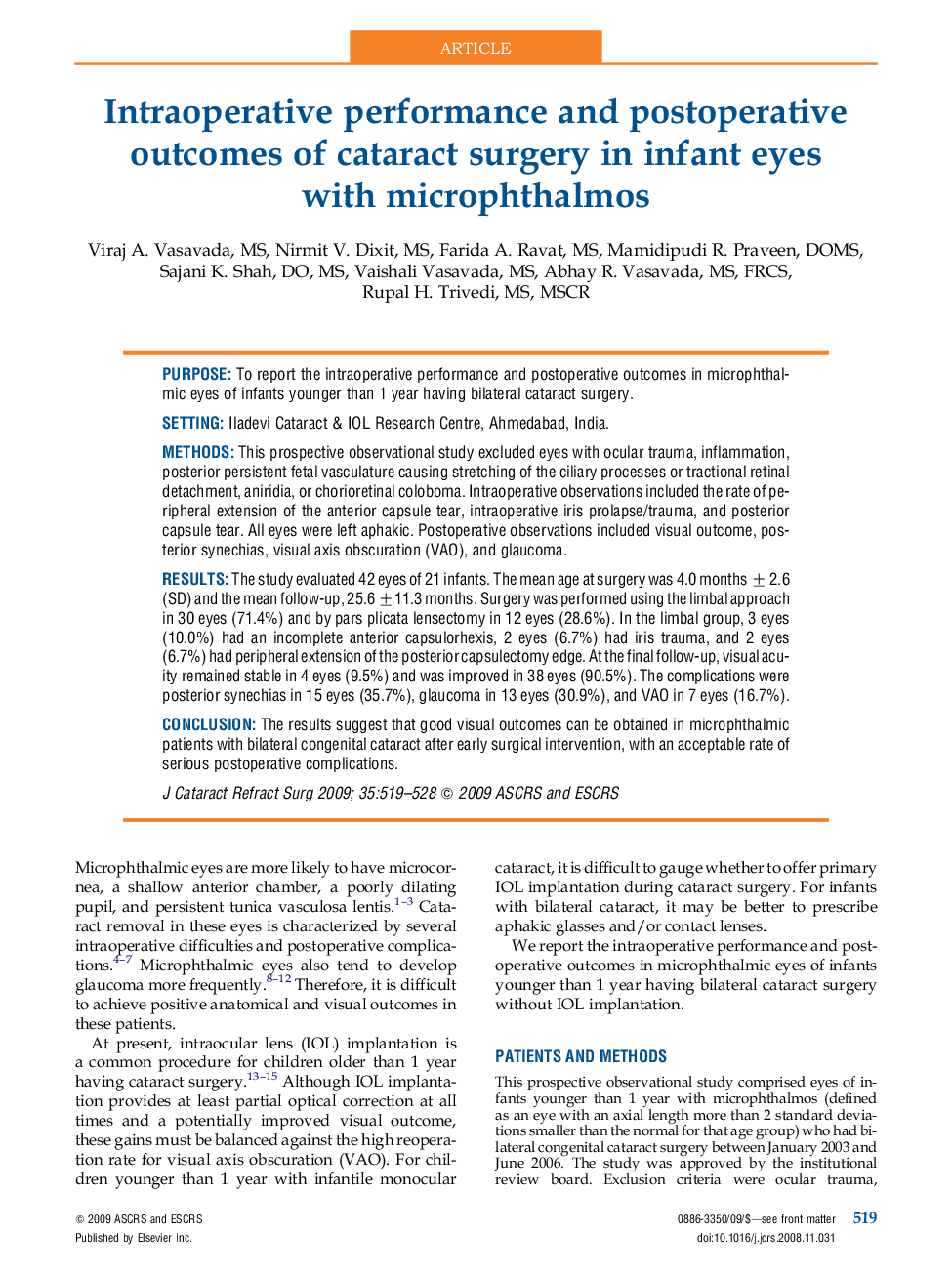| کد مقاله | کد نشریه | سال انتشار | مقاله انگلیسی | نسخه تمام متن |
|---|---|---|---|---|
| 4021789 | 1262067 | 2009 | 10 صفحه PDF | دانلود رایگان |

PurposeTo report the intraoperative performance and postoperative outcomes in microphthalmic eyes of infants younger than 1 year having bilateral cataract surgery.SettingIladevi Cataract & IOL Research Centre, Ahmedabad, India.MethodsThis prospective observational study excluded eyes with ocular trauma, inflammation, posterior persistent fetal vasculature causing stretching of the ciliary processes or tractional retinal detachment, aniridia, or chorioretinal coloboma. Intraoperative observations included the rate of peripheral extension of the anterior capsule tear, intraoperative iris prolapse/trauma, and posterior capsule tear. All eyes were left aphakic. Postoperative observations included visual outcome, posterior synechias, visual axis obscuration (VAO), and glaucoma.ResultsThe study evaluated 42 eyes of 21 infants. The mean age at surgery was 4.0 months ± 2.6 (SD) and the mean follow-up, 25.6 ±11.3 months. Surgery was performed using the limbal approach in 30 eyes (71.4%) and by pars plicata lensectomy in 12 eyes (28.6%). In the limbal group, 3 eyes (10.0%) had an incomplete anterior capsulorhexis, 2 eyes (6.7%) had iris trauma, and 2 eyes (6.7%) had peripheral extension of the posterior capsulectomy edge. At the final follow-up, visual acuity remained stable in 4 eyes (9.5%) and was improved in 38 eyes (90.5%). The complications were posterior synechias in 15 eyes (35.7%), glaucoma in 13 eyes (30.9%), and VAO in 7 eyes (16.7%).ConclusionThe results suggest that good visual outcomes can be obtained in microphthalmic patients with bilateral congenital cataract after early surgical intervention, with an acceptable rate of serious postoperative complications.
Journal: Journal of Cataract & Refractive Surgery - Volume 35, Issue 3, March 2009, Pages 519–528